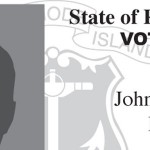The Risk of Investment Promises May Be Unhedgeable
Early in the summer, Rhode Island General Treasurer Gina Raimondo announced that the state had invested $900 million of its pension assets in hedge funds. The decision was actually made in the middle of last year, in response to an asset liability study, treasury spokeswoman Joy Fox tells the Current. At that point, the treasurer began accumulating resources in cash to transition it into the new strategy.
The move was meant to introduce adjustments for risk to the defined benefit portion of the state’s pension fund, and Raimondo’s office expects the hedging to reduce risk by a tenth. Republican Congressional candidate Michael Riley, himself an investment adviser, told the Current’s Kevin J. Mooney that the concept is sound, in a general way. The details are the deciding factor.
Pension expert Rich Danker, pointing out that the hedge funds will claim about 12% of Rhode Island’s state pension resources, notes that the investment management fees associated with hedge funds have become a sticky issue in South Carolina.
Providence Journal reporter Paul Edward Parker paraphrased Raimondo’s hedging plan as coupling modest gains with modest losses, rather than the more wild gyrations that can make the stock market resemble a roller coaster. However, in her email to the Current, Fox declined to specify the return rate intended for the hedge fund, citing only the portfolio’s annual 7.5% target.
While it may mitigate losses during downswings, how investing 12% of the pension fund in a safer portfolio will help achieve that high rate of return remains unclear. The average return for the fund over the past five years has been 2.28%. To make up for the underachieving decade just completed, the return over the next decade would have to be 10.34%.
Put in historical context, the late 2010s and early 2020s will have to resemble the 1950s, ’80s, or ’90s. With national debt now over $16 trillion and the economy still sputtering, that does not look likely.
The boom in the U.S. economy after World War II was founded in pent-up demand and massive destruction across the rest of the industrialized world. The growth of the economy in the ’80s was arguably premised on the acceleration of federal borrowing from the future, directed into the productive economy with deregulation and inflation control. And the ’90s relied upon the ability of derivative investments to soak up the value of scheduled mortgage payments from home buyers whose ability to pay was always questionable.
If the economy of the Obama years teaches anything, it may be the necessity of returning to an economy founded on production and only prudent borrowing. However much the State of Rhode Island hedges against risk, that is, a real economic recovery may not be synonymous with investment growth, and a prioritization of investment growth for the sake of the financial markets may represent a risk that cannot be hedged.



